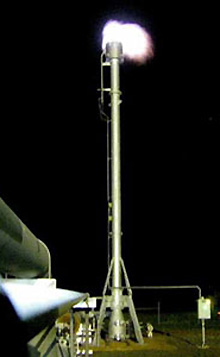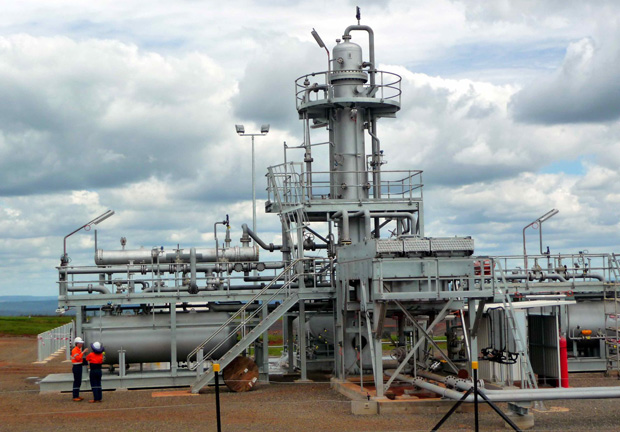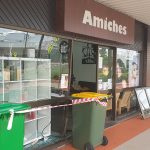
(Photo: Cougar Energy)
August 1, 2019
Moreton Resources has enjoyed a partial win in the Federal Court in relation to its long-standing dispute with the Australian Taxation Office over research and development tax offsets linked to its failed UCG project near Kingaroy.
The Federal Court has ruled the Administrative Appeals Tribunal (AAT) erred in its definition of “core R&D activities” when it determined last year that activities claimed by Moreton Resources were not research and development.
It has referred the matter back to the AAT for determination.
Moreton Resources was hit with a claim by the Australian Taxation Office in July 2016.
It was a hangover from then-Cougar Energy’s failed UCG project near Coolabunia which was shut down by the State Government after a well failure in March 2010.
The ATO had been seeking repayment of $1,003,455.22 for a 2012 research and development tax offset, and $7,182,269.41 for a 2013 R&D offset, both linked to the UCG project.
It is believed interest has been accruing against these original amounts owed to the ATO.
Moreton disputed the company owed the money and appealed to the AAT.
However, the AAT ruled in September last year that the activities claimed by Moreton Resources were not research and development, as defined by the 1997 Income Tax Assessment Act.
The AAT upheld a finding by Innovation and Science Australia that UCG was a known and proven technology.
Moreton appealed to the Federal Court, which agreed – at least in part – with the company.
In a judgment handed down on July 25, Justices Davies, Moshinsky and Steward found the AAT’s decision should be set aside.
However, the judges also found it was not appropriate for the Federal Court to determine whether Moreton’s claimed “core R&D activities” for 2012-14 (after the UCG well failed but before the Board abandoned the project) were “supporting R&D activities”.
This was referred back to the AAT for determination.
Despite its win, Moreton Resources may still have to pick up at least part of the costs of the hearing.
“We note that, while Moreton has been successful in the overall outcome of the appeal, it has not been successful in its contention that this Court should itself determine whether the registered ‘core R&D activities’ for the 2012 to 2014 years constituted ‘supporting R&D activities’ on the basis of Moreton’s alternative submission before the tribunal,” the judges wrote.
In a statement to the ASX on Monday, Moreton Resources said: “The company sees this development as a significant step forward in not only an effort to bring this matter to a close but also assist the company focus its efforts on moving into sustained production and advancement of its multiple projects.
“The matter is by no means resolved as yet, however the findings and the observations have left the Board feeling vindicated in the pursuit of this matter and certainly looking forward to resolving the matter, be it at an AAT hearing of through prior negotiation with AusIndustry.”
Related articles:
- Moreton Weighs Up Sale Of Mine
- Moreton Outlines Plan To Pay Off Tax Debt
- Moreton Tax Bill Still In Limbo
- Moreton Faces $8m Tax Bill
* * *

The Federal Court judgment provides a timeline of events at the Kingaroy UCG trial and a description of the problem which eventually led to the closure of the pilot project.
About 3:30pm on March 15, 2010, the UCG burn process was ignited in well P1 for the first time to test Cougar Energy’s above and below-ground facilities.
Coal was burned at the base of P1 while air was injected at high pressure into the well to expand the fire. The syngas produced from this was directed towards a second well, known as P4. This “forward combustion” process was later reversed to produce syngas at well P1.
“On March 15, 2010, steam was seen emanating from the base, which was at ground level, of the casing strings of P4. The forward and reverse combustion processes continued until March 20, 2010, when the casing of P4 was momentarily moved by a few centimetres early one morning.
“That movement caused the well head gauge to shatter. The air injection was stopped and the associated surface pipework at well P4 was dismantled.
“Subsequent investigations revealed that there was a solid blockage within P1 at a depth of approximately 132 metres and a casing break in P4 at a depth of approximately 62 metres. Both the blockage and the casing break were believed to have been caused by thermal expansion and poor cementing between inner and outer casings. Moreton shut down the plant.”
Cougar Energy reported to DERM, probably on July 13, 2010, that water quality tests it had conducted on June 29 had detected benzene and toluene in a groundwater monitoring bore close to the plant.
DERM conducted its own tests on five bores and concluded that, in each case, the levels were below the Australian Drinking Water Guideline standards.
However, on July 15, DERM stated that it would order Cougar Energy to keep the pilot UCG project closed until the government was assured that groundwater resources were protected.
Cougar Energy continued to explore its options in regards to UCG until June 2013 when a new Board decided to cease efforts to reignite the project and to focus on coal.
The pilot project was abandoned and rehabilitation work on the site began.
On April 16, 2016, the State Government banned all UCG activities in Queensland.























